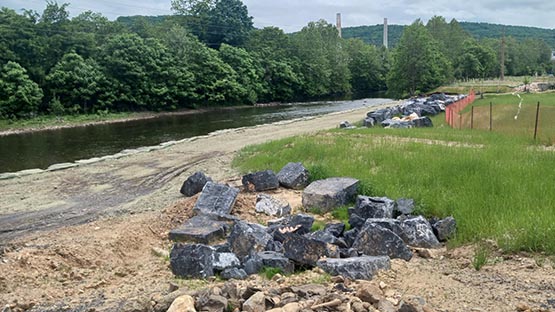
The Virginia-type peanut is known for its large kernels compared to the other three types grown in the United States, said Dell Cotton, executive secretary of the Virginia Peanut Growers Association. The majority of Virginia-type peanut production in the United States takes place in Virginia, North Carolina and South Carolina.
“The larger Virginia kernels support various prominent industries. The in-shell peanut is sold in grocery stores and at sporting events. The shelled extra-large kernels are used as cocktail peanuts. The super-extra-large kernels are used by gourmet processors to cook and package, usually in tins, for distribution,” Cotton said.
Virginia-grown peanuts are produced in about eight localities in the southeastern part of the state, where sandy soils are conducive to their growth. They typically are planted in May and harvested at the end of September or first part of October.
Kevin Monahan in Sussex County has grown peanuts on his multi-generational farm for 31 years. He used to farm with his uncle and grandfather, and now he farms with his sons, Drew and Brad. The family still grows peanuts on a farm that belonged to Monahan’s great-great-grandfather.
This summer he is growing 135 acres of Virginia-type peanuts—100 acres for seed and another 35 acres that will be sold as an in-shell product.
“Peanuts take a lot of work to grow,” Monahan said. “You have to scout the plants for diseases and keep them sprayed to prevent disease.”
Monahan used to grow as many as 350 acres of peanuts when the federal quota system was in place. Passage of the 2002 Farm Bill ended the 70-year-old federal system of production and price controls, and it was replaced with a more market-oriented approach.
“With the quota system we knew we could get a certain amount of money per ton of peanuts, and we planned our peanut acreage based on the average yield from the previous year,” Monahan said. He and other farmers now plant peanut acreage based on contracts with peanut processing companies, called shellers.
“I found I do a better job managing the peanuts since I reduced the number of acres we grow,” Monahan said. “It used to take a month in the fall to get all of those peanuts in, and now if we have good harvest conditions, it takes about 8 to 10 days.”










